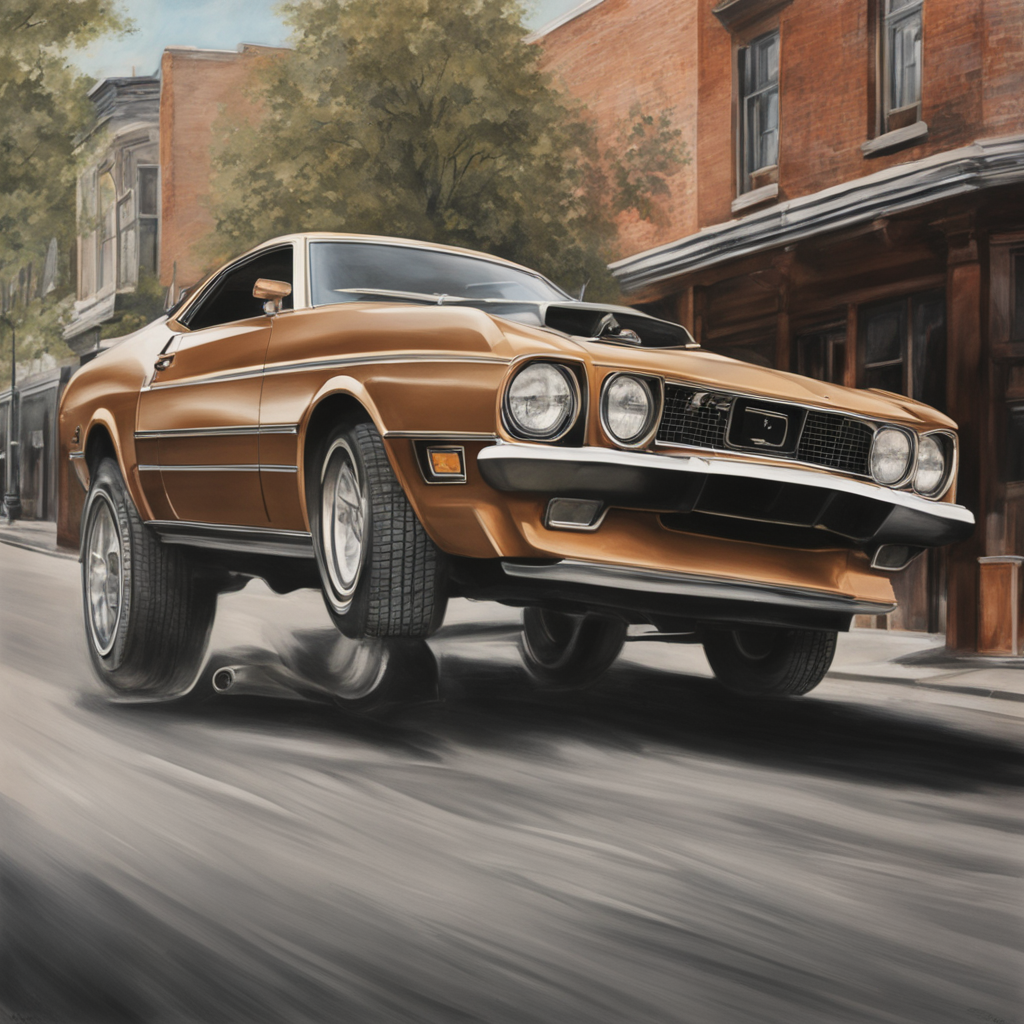1974 Ford Mustang: A Testament to American Muscle
The 1974 Ford Mustang was a culmination of decades of innovation, design, and performance. Introduced in 1964 as a pony car, …
Updated October 14, 2023
Brief History and Significance

The 1974 Ford Mustang was a culmination of decades of innovation, design, and performance. Introduced in 1964 as a pony car, the Mustang quickly became an icon of American muscle, symbolizing freedom, power, and style. By the early 1970s, the Mustang had evolved into a more mature, refined vehicle, embracing new technologies and styling trends.
The 1974 model year marked a pivotal point in the Mustang’s history. As fuel efficiency concerns and emissions regulations grew more stringent, Ford responded by introducing significant changes to the Mustang lineup. These updates not only addressed environmental concerns but also refocused the brand on performance, handling, and overall driving experience.
Design and Styling
The 1974 Mustang saw a major facelift, with a new, more angular design that replaced the previous year’s softer, curvier lines. The new look was characterized by a prominent front grille, wraparound bumpers, and a distinctive fastback roofline on the Mach 1 model. This redesign also introduced a revised rear treatment, featuring a bold taillight array and a chunky bumper.
The 1974 Mustang offered three distinct body styles: Fastback, Convertible, and Coupe. The Fastback retained its sleek, sloping profile, while the Convertible featured a soft-top or optional hardtop. The Coupe, with its slightly more angular design, became the most popular configuration.
Color Options and Trim Levels
The 1974 Mustang boasted an impressive palette of 14 colors, including new shades like Cinnamon Gold Metallic and Bright Red. Trim levels included Base, Deluxe, and Mach 1, each offering distinct styling cues, interior appointments, and performance upgrades. The Mach 1, in particular, became a benchmark for muscle car enthusiasts, with its bold stripes, hood scoops, and sport-tuned suspension.
Performance and Specifications
The 1974 Mustang’s powertrain lineup featured three main engine options: the base 2.3L inline-four, the 3.3L V6, and the iconic 351cid V8. This latter engine, available in the Mach 1 and GT models, delivered 266 horsepower and a robust 318 lb-ft of torque.
Transmission choices included a three-speed automatic or four-speed manual with a Hurst shifter (on certain trim levels). The Mustang’s suspension received updates for improved handling, while disc brakes became standard on most models.
Variants and Special Editions
In 1974, Ford introduced the Mach 1 II package, featuring a performance-oriented suspension, hood scoops, and unique stripes. Additionally, the GT Equipment Package offered a sport-tuned suspension, upgraded brakes, and exclusive badging. Limited-edition variants like the Twister Special (a tribute to the 1972 Super Bowl VII-winning Miami Dolphins) added to the Mustang’s allure.
Fastback, Convertible, and Coupe Body Styles

The 1974 Mustang Fastback retained its iconic profile, while the Convertible offered an open-air driving experience. The Coupe became the most popular configuration, with its more angular design and improved visibility. Each body style had its unique charm, appealing to a diverse range of enthusiasts.
GT Equipment Package
The 1974 GT Equipment Package upgraded the Mustang’s suspension, brakes, and appearance. This package added sport-tuned springs, shocks, and stabilizer bars for enhanced handling. Unique badging and stripes further distinguished the GT from other trim levels.
Impact on the Automotive Industry
The 1974 Ford Mustang not only solidified its position as an American icon but also influenced competitor models like the Chevrolet Camaro and Dodge Challenger. As fuel efficiency concerns grew, manufacturers began to adapt to new regulations, leading to a shift toward more efficient powertrains and aerodynamic design.
Sales Figures and Popularity
The 1974 Mustang saw moderate sales growth compared to previous years, with over 145,000 units sold in the United States alone. Despite the introduction of smaller, more fuel-efficient vehicles, the Mustang remained a staple of American muscle car culture.
Collectibility and Value
Today, 1974 Ford Mustangs are highly sought after by collectors and enthusiasts alike. Prices for restored or original models vary depending on condition, trim level, and body style:
- Base model: $5,000 - $10,000
- Deluxe: $8,000 - $15,000
- Mach 1: $12,000 - $20,000
- GT: $18,000 - $30,000
Buying Guide
When purchasing a 1974 Ford Mustang, consider the following:
- Inspect for signs of rust or damage on the body and undercarriage.
- Check engine compartment for proper sealing and no signs of leaks.
- Test drive to ensure smooth transmission operation and proper suspension response.
- Research original documentation, including titles, receipts, and maintenance records.
Conclusion
The 1974 Ford Mustang represents a pivotal moment in American automotive history. As the muscle car era evolved, the ‘74 Mustang adapted to changing regulations while maintaining its core identity as a performance-driven icon. With its distinctive styling, improved handling, and iconic engine options, this model year remains a favorite among collectors and enthusiasts alike.

